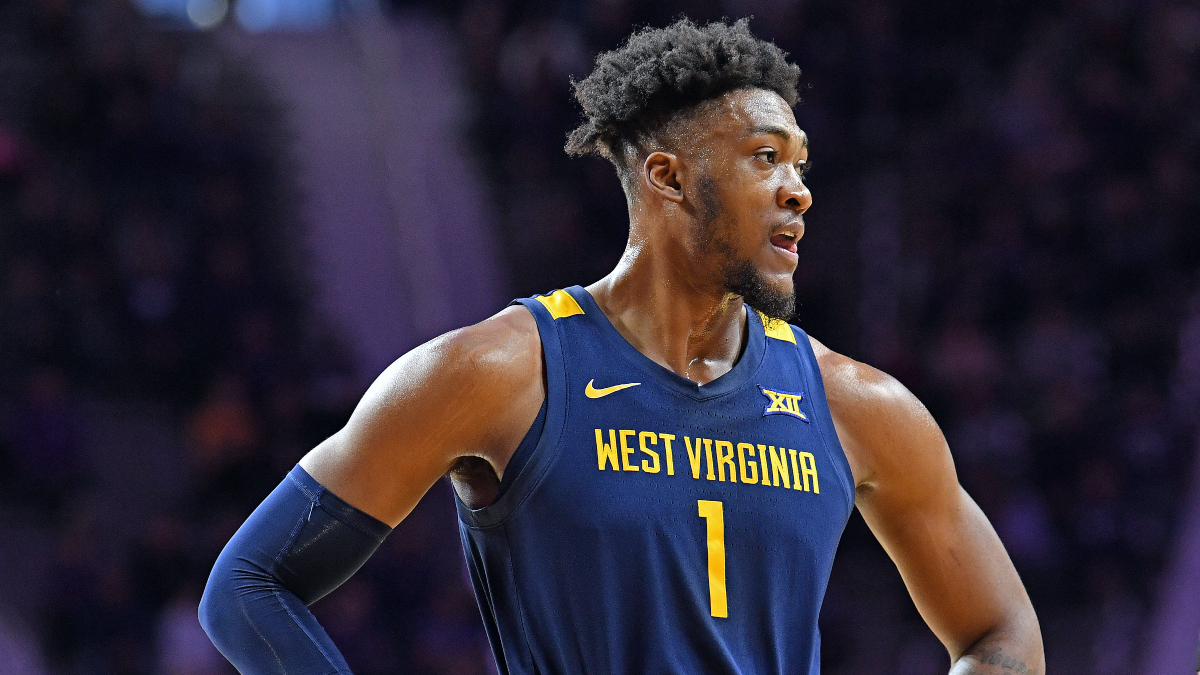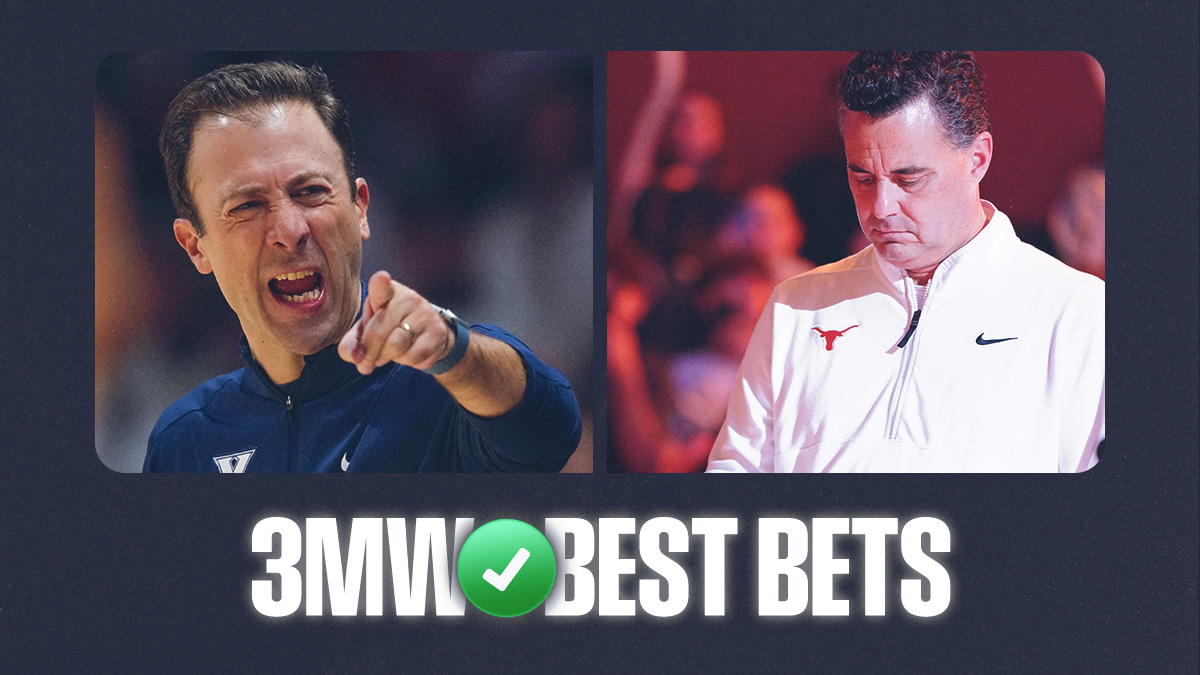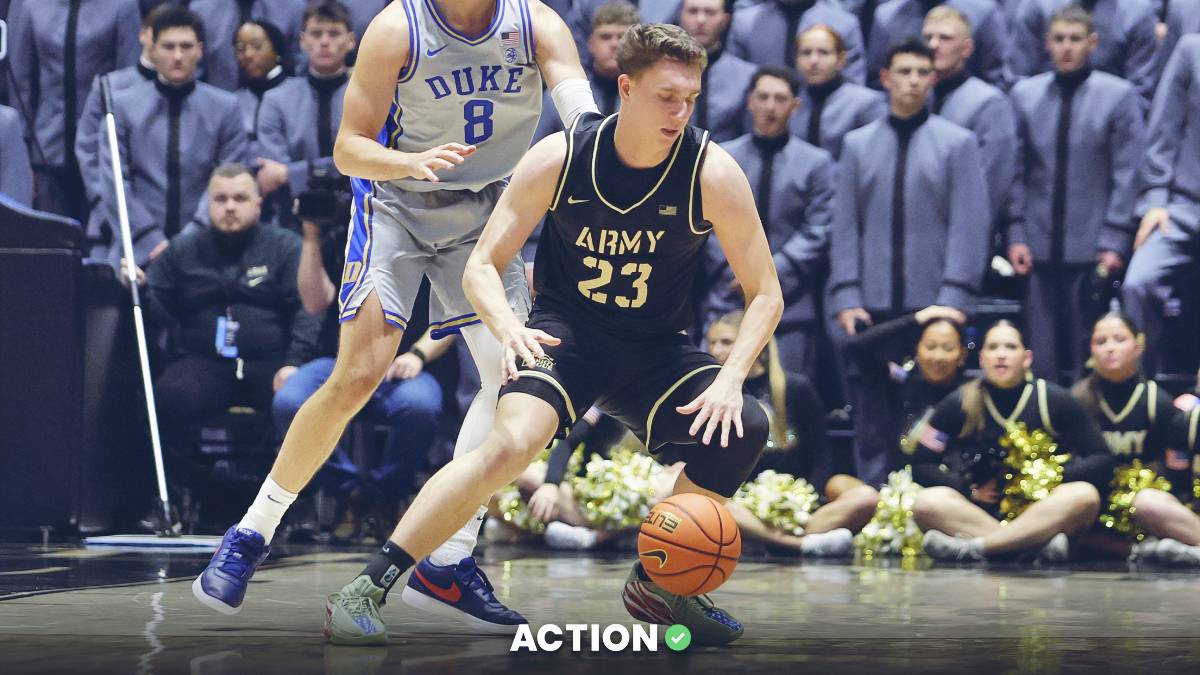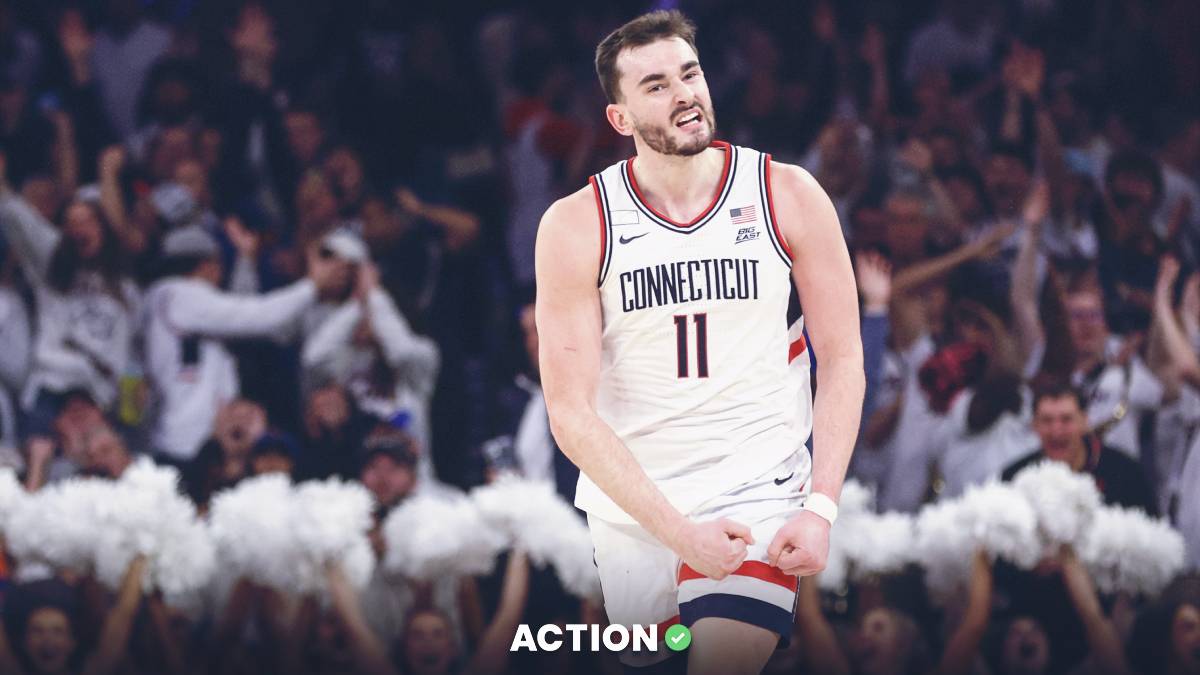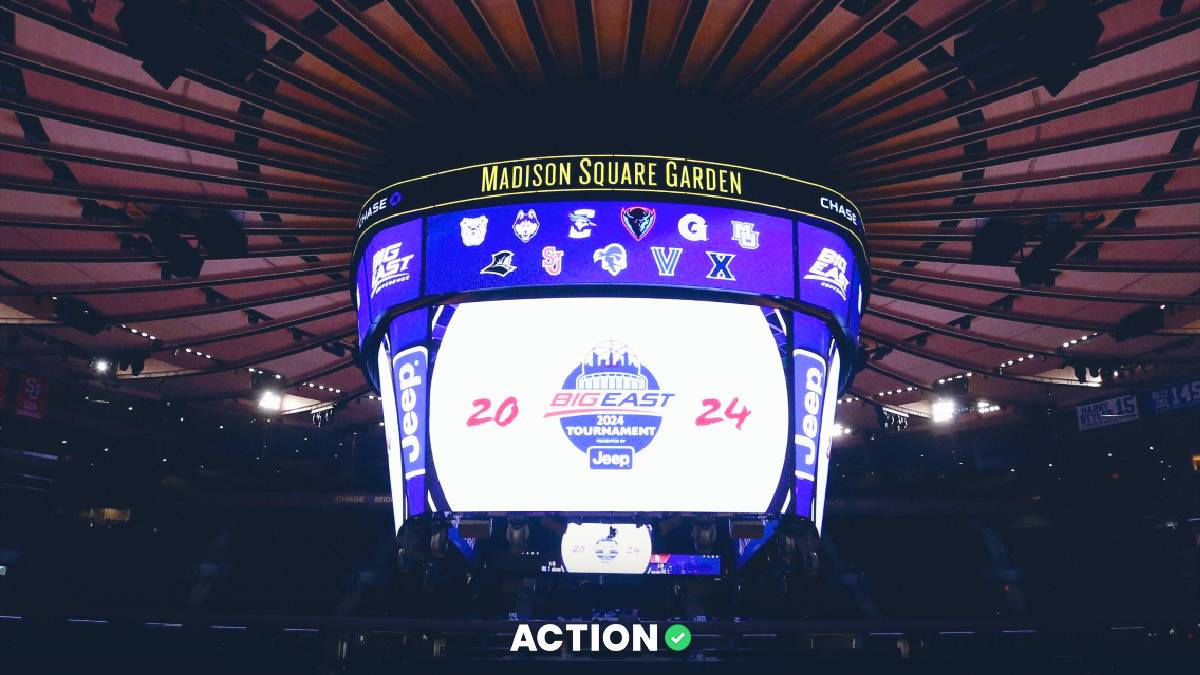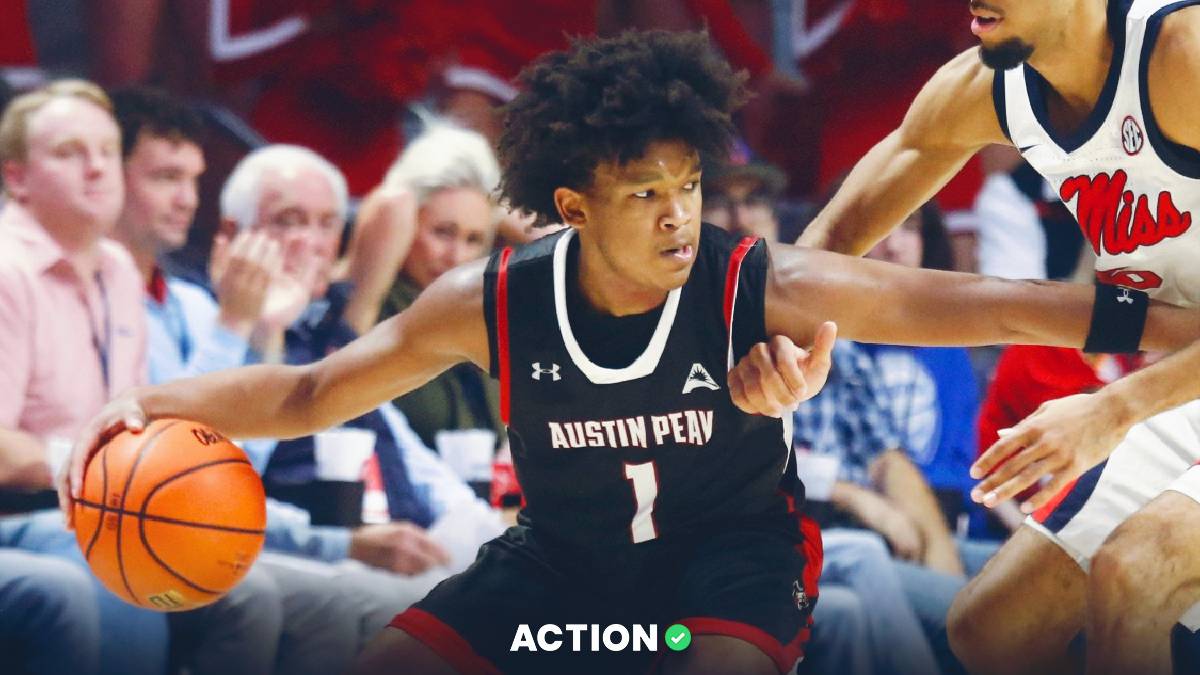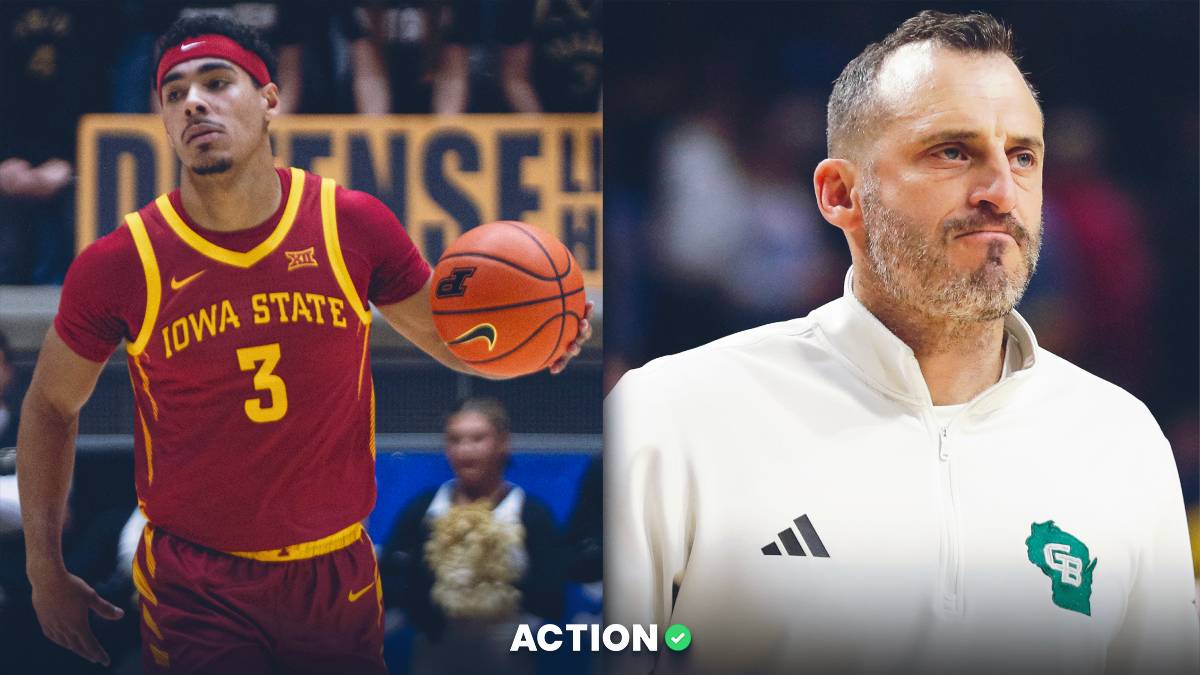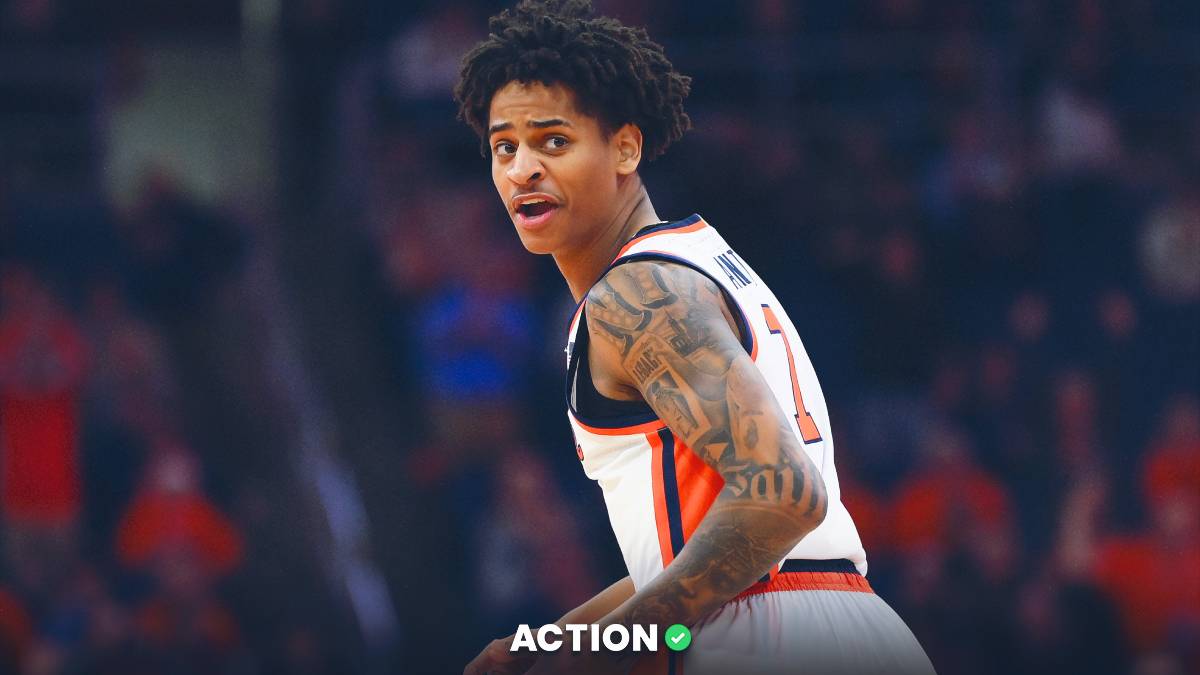During the 2018-19 college basketball season, I published two weekly columns dedicated to the college basketball futures market: "National Title Contenders" and "Final Four Dark Horse Candidates."
While it would be disingenuous to suggest that adjusted metrics have reached a statistically significant point of stabilization (By my reckoning, this would require an additional sample of nearly 400 games), I contend that we've seen enough basketball this season to warrant the renewal of both columns.
As crazy as this might sound, most teams have five to eight games remaining on their regular season schedules. Simply put, there isn't much college basketball left to analyze — and so, this is our premature but necessary starting point.
As in my previous columns, I analyzed all college basketball teams based on three metrics, each sourced from Ken Pomeroy:
Adjusted offensive efficiency (AdjO): Points scored per 100 possessions, adjusted for opponents
Adjusted defensive efficiency (AdjD): Points allowed per 100 possessions, adjusted for opponents
Adjusted efficiency margin (AdjEM): The difference between a team's offensive and defensive efficiency
I then correlated each of these metrics with NCAA tournament performance. AdjEM boasted by far the highest correlation at r=0.62, which suggests that well-balanced teams are more successful in the postseason.
Nonetheless, AdjO (r=0.47) and AdjD (r=0.43) each report statistically significant correlational coefficients of their own. We can utilize these two metrics in combination to identify teams that may not win the Big Dance, but could at least make a run to the Final Four.
Establishing Our Statistical Thresholds
Adjusted Offensive Efficiency (AdjO)
Our next step is to establish statistical thresholds for AdjO and AdjD that clearly discriminates Final Four teams from the set of all tournament teams.
Through statistical treatment, I've established an AdjO threshold of 113.9 as our first baseline parameter. That threshold was previously set at 114.0 during the 2018-19 season, but it has been adjusted down due to recalibration following the 2019 postseason results.
This filter captures 17-of-18 national champions, 12-of-18 runners-up and 54-of-72 Final Four teams since the 2001-02 season. This, of course, excludes one former national champion: The 2014 Connecticut Huskies.
That memorable UConn team won a national title despite reporting an end-of-regular-season AdjO of just 111.4. This AdjO figure reflects a z-score of -0.06, which is considered below-average among all tournament teams in our 18-year sample. This makes the Connecticut's 2014 team an extreme outlier.
Adjusted Defensive Efficiency (AdjD)
Our statistical threshold for AdjD is set at 96.0 or lower. This, too, has been adjusted from its 2018-19 value of 96.2.
This filter captures all 18 national champions, 17-of-18 runners-up and 66-of-72 Final Four teams since the 2001-02 season.
The prescribed AdjD baseline is actually fairly low; it includes all teams with an AdjD z-score of 0.00 or higher. That means that any team with a historically average defense or better makes the cut.
That seems a bit fishy, doesn't it? Can it really be the case that average defense is enough in college basketball?
Based on my statistical analysis, yes; that indeed seems to be the case. Unlike AdjEM or AdjO, improved AdjD beyond 96.0 (z=0.00) does not improve a team's tournament success.
Put differently, a team must have an AdjD score of 96.0 or better in order to contend for a championship; but, improving beyond that mark does not improve the likelihood that the team will win a title.
The 2020-21 Final Four Dark Horse Candidates
After cross-referencing 2020-21 teams with an AdjO of 113.9 or higher and an AdjD of 96.0 or lower, we're left with 12 teams who fit our profile as a Final Four Dark Horse candidate.
Eight of those teams (Gonzaga, Baylor, Michigan, Illinois, Houston, Ohio State, Virginia and Villanova) also qualify as National Championship Contenders. However, four additional teams remain that have strong resumes to make the Final Four — or better:
This list of potential Final Four candidates notably excludes No. 8 Iowa, No. 9 Oklahoma, No. 10 Alabama, and No. 11 Tennessee … among many others.
Now that all teams are squarely in the thick of conference play, stiffer competition should gradually weed out the pretenders from the contenders.
Perhaps the teams excluded above will elevate their play against familiar conference foes. Even so, there still may be cause for concern for teams who haven't yet made the cut.
A Note on the West Virginia Mountaineers
West Virginia (+550) deservedly makes the list of Final Four Dark Horse contenders, but WVU's forthcoming schedule is remarkably unkind:
- Feb. 9 at No. 13 Texas Tech
- Feb. 15 vs. No. 2 Baylor
- Feb. 18 at No. 2 Baylor
- Feb. 20 at No. 6 Texas
- Feb. 23 at TCU
- Feb. 27 vs. Kansas State
If the Mountaineers are truly the real deal, then we'll receive ample confirmation in short order as they take on four top-15 opponents in the next 12 days.
West Virginia (13-5) has fared respectably against elite competition this season, including a 5-point loss against No. 1 Gonzaga on a neutral court, a 4-point loss to No. 10 Oklahoma on the road in Norman and a 2-point home loss to No. 6 Texas.
First Four Out
The following four teams are knocking on the door for Final Four Dark Horse contention, but each of them still has some ground to make up in order to qualify (AdjO of 113.9 or higher | AdjD of 96.0 or lower).
Penn State (50-1) likely looks rather out of place among the four teams above. And I'll admit: I, too, was shocked at first when I saw the Nittany Lions (7-8 Overall, 4-7 Big Ten) sitting at eighth place in the Final Four Dark Horse rankings.
However, a closer examination of the team's schedule reveals an overwhelming gauntlet of recent competition. In fact, Ken Pomeroy grants Penn State the No. 1 most difficult strength of schedule in Division-I basketball. Tanner McGrath elaborates on the Nittany Lions in his most recent discussion on Big Ten Conference Futures:
On Jan. 19, the Nittany Lions lost their fifth straight. The team was 3-6 overall and 0-5 in the conference, and Penn State looked almost as bad as Nebraska.
However, Penn State had just finished a gauntlet in which it played Michigan, Purdue, Indiana, and Illinois (twice).
Since then, Penn State has won four of its last six, beating Rutgers and Wisconsin in the process. Plus, during non-conference play, it defeated VCU at home and Virginia Tech on the road.
The point being, Penn State has some quality wins, has begun to play better and seems to be much better than their record indicates.
Am I grabbing some Penn State at 50-1 to make the Final Four?
Well … no.
After all, the Nittany Lions aren't even a lock to make the tournament … and they draw dates against Ohio State, Iowa, Purdue, Minnesota and Maryland as their final five opponents to close out the season.
But, at least if Penn State gets hot and runs the table in the Big Ten conference tournament, I'll earn a hollow victory by having written them up here, right?
Wrong. There are no moral victories here; we back our claims with vested interest — not soft, sandbagging claims or whimsical shots over the bow. So, despite the Nittany Lions' advanced metrics, I can't back them here.
Next Four Out
USC (+800) offers by far the best raw value out of this group. But I'd rather place a unit on my hometown N.C. State Wolfpack (40-1 odds | 8-7 overall | 4-6 in ACC) than to wager on the Trojans.
That is to say: This ain't it, chief.
Top 4 Mid-Major Threats
Loyola-Chicago's odds to make the Final Four are not currently listed at FanDuel or other legal sportsbooks, but you can still find odds for the Ramblers to win the National Championship at Fox Bet (300-1) and William Hill (150-1).
We will be publishing follow-ups to this piece as teams move into and out of contention throughout the season. Whenever a team ascends into Final Four Dark Horse consideration — or falls from grace — we'll be sure to keep you updated accordingly.


